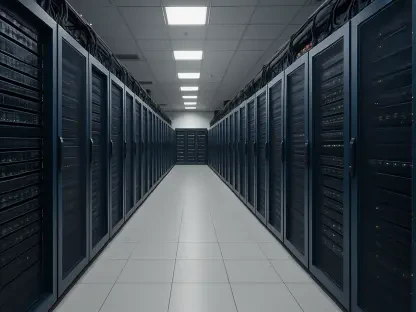The modern era of digitalization has brought about significant advancements in cybersecurity. However, with these advancements come equally sophisticated cyber threats. Chief information security officers (CISOs) are particularly concerned about the rapid evolution of phishing scams and impersonation strategies. This roundup article gathers insights from various security experts to delve into the growing complexity of these threats, the methodologies employed by cybercriminals, and the precautions recommended to mitigate these risks.
Setting the Scene: A Brief History of Cyber Threats
Cyber threats have come a long way from their early days of simple computer viruses and basic malware. Initially, these threats targeted individual computers with attempts to corrupt data or disrupt basic operations. Over time, the sophistication of attacks evolved. Modern threats now include advanced persistent threats (APTs), ransomware, and multi-layer phishing tactics aimed at broader networks and more substantial data hauls. As the landscape of cyber threats has changed, so too have the strategies employed by those defending against them.
The Increasing Relevance of Modern Phishing and Impersonation Schemes
Phishing scams have become significantly more advanced, moving beyond the once easily detectable spam emails. Now, these attacks are often tailored to individual targets through techniques like spear-phishing, where attackers research their victims thoroughly to create highly convincing, personal messages. Impersonation schemes, too, have gained traction, with attackers masquerading as trusted colleagues or reputable organizations to deceive individuals into disclosing sensitive information or transferring money.
What’s Ahead: A Preview of Upcoming Security Challenges
The future of cybersecurity promises to present further challenges as attackers refine their techniques and discover new vulnerabilities. Innovations in technology may provide new avenues for attacks, making it imperative for organizations to stay ahead of the curve with their defensive measures. The consistent message from industry professionals is clear: proactive security practices and continuous adaptation are crucial in an ever-evolving threat landscape.
The Sophistication of Contemporary Phishing Attacks
Contemporary phishing attacks exhibit a level of sophistication previously unseen, incorporating elements such as realistic-looking websites and fake login screens. Attackers employ social engineering techniques to gain users’ trust, exploiting human psychology to achieve their aims. This increasing finesse requires victims to be perpetually vigilant and highlights the need for ongoing education about recognizing these deceptive tactics.
Evolving Tactics: How Cybercriminals Compromise Sensitive Data
Cybercriminals continually evolve their tactics to compromise sensitive data, employing strategies such as man-in-the-middle attacks, credential stuffing, and exploiting software vulnerabilities. The goal often extends beyond immediate financial gain, as compromised data can be sold or used for further attacks. This evolution drives the need for organizations to implement rigorous security protocols and constantly update their defenses.
Challenges in Detection and Prevention in Today’s Digital Landscape
Detecting and preventing advanced phishing and impersonation scams poses significant challenges. These threats often blend seamlessly with legitimate activities, making them hard to detect using traditional security measures. Experts emphasize the importance of using multi-layered security approaches, combining technical safeguards with human vigilance to detect and prevent such threats effectively.
Impersonation Tactics: Strategies and Real-World Implications
Impersonation tactics exploited by cybercriminals involve creating a façade of legitimacy, often through sophisticated spoofing techniques. For example, attackers may replicate email domains and websites to appear authentic. Real-world implications of such tactics can be severe, including data breaches, financial loss, and reputational damage. Organizations must adopt stringent verification processes to counteract these strategies effectively.
Case Study: High-Profile Incidents of Organizational Deception
Several high-profile incidents have underscored the devastating impact of organizational deception. One notable case involved a prominent financial institution targeted by attackers who posed as senior executives. The breach resulted in a substantial financial loss and prompted a reevaluation of security protocols across the industry. Such cases illustrate the importance of scrutinizing unusual requests and reinforcing internal controls.
Balancing Innovation with Security: Industry Practices and Concerns
Innovation in technology is essential for progress, but it also introduces new security concerns. Industry practices now focus on balancing the drive for innovation with the imperative of robust security measures. Organizations invest in continuous research, training, and the implementation of advanced security solutions to safeguard against evolving threats, ensuring that progress does not come at the expense of security.
The Human Element: Psychological Exploits in Cyber Threats
Cyber threats increasingly exploit psychological vulnerabilities. Attackers manipulate human behaviors, such as the tendency to trust authority figures or respond to urgent requests without verification. Training employees to recognize these psychological exploits is crucial, as awareness remains a significant line of defense against such sophisticated attacks.
Global Trends: Regional Disparities in Cybersecurity Strategies
Cybersecurity strategies vary globally, reflecting regional disparities in approach and resource allocation. Some regions prioritize advanced technological defenses, while others focus on legal frameworks and international cooperation. Understanding these global trends helps organizations tailor their security measures to address both local and international threats effectively.
Technology vs. Human Ingenuity: Future Threats and Mitigations
The ongoing battle between technology and human ingenuity shapes the future of cyber threats. While technology provides powerful tools for defense, attackers continually develop innovative methods to bypass these safeguards. Future mitigations will likely involve a combination of advanced technological solutions and enhanced human intelligence, aiming to stay ahead of the increasingly creative and sophisticated attacks.
Innovative Defenses: AI and Machine Learning in Cybersecurity
Artificial intelligence (AI) and machine learning are revolutionizing cybersecurity. These technologies offer advanced capabilities in detecting anomalies, identifying potential threats, and automating responses. Experts recognize the transformative potential of AI but caution that it must be integrated thoughtfully with human oversight to maximize its efficacy without compromising security.
Future Directions: Expert Predictions on Cyber Threat Landscapes
Looking ahead, experts predict that cyber threats will continue to evolve in complexity and scale. The integration of AI, the proliferation of IoT devices, and the increasing dependency on digital systems may introduce new vulnerabilities. Staying informed about these developments and preparing adaptive security measures will be essential for organizations to safeguard their assets.
Comparative Insights: Lessons from Leading Cybersecurity Firms
Leading cybersecurity firms offer valuable insights into best practices and lessons learned from combating cyber threats. These firms emphasize the importance of a multi-layered security approach, combining technological defenses with continuous staff training. Regular audits, simulated phishing exercises, and real-time threat monitoring emerge as critical components of a robust cybersecurity strategy.
Key Takeaways: Insights from Industry Leaders
Industry leaders stress the necessity of a proactive stance in cybersecurity. Staying updated with the latest threat intelligence, investing in advanced security technologies, and fostering a culture of vigilance within organizations have been highlighted as central components for robust defense systems. Organizations are advised to prioritize both technological and human elements in their security strategies to create comprehensive protection against emerging threats.
Best Practices: How Organizations Can Fortify Their Defenses
Organizations can fortify their defenses by implementing several best practices. Regularly updating software and systems to patch vulnerabilities, conducting thorough employee training programs, and establishing clear procedures for verifying requests are essential measures. Additionally, adopting a zero-trust approach where no entity is inherently trusted, and continuous monitoring of network activity are recommended strategies.
Practical Advice: Implementing Effective Cybersecurity Measures
Effective cybersecurity measures require a combination of technical controls and informed practices. Organizations should deploy endpoint protection solutions, enable multi-factor authentication, and conduct routine security audits. Developing an incident response plan and performing regular disaster recovery drills can ensure preparedness for potential breaches, minimizing impact and accelerating recovery.
Reflecting on the Dynamic Nature of Cybersecurity Threats
As cybersecurity threats continue to evolve, the need for adaptive and resilient defense mechanisms has never been more critical. Reflecting on the ever-changing nature of these threats underscores the importance of continuous learning, innovation, and proactive security measures. The dynamic landscape demands vigilance and adaptability from organizations to stay ahead of cyber attackers.
The Future of Cybersecurity: Preparing for New Challenges
Preparing for new cybersecurity challenges involves anticipating potential threats and adapting strategies accordingly. Organizations must invest in cutting-edge technologies, foster a culture of security awareness, and engage in proactive threat intelligence sharing. Understanding that cyber threats will persist and evolve helps organizations structure their defenses to address future challenges effectively.
Closing Thoughts: Staying Proactive in an Ever-Evolving Digital World
Staying proactive in an ever-evolving digital world is essential for maintaining robust cybersecurity. As cyber threats become increasingly sophisticated and deceptive, organizations must remain vigilant and adaptable. By fostering a culture of continuous learning, leveraging advanced technologies, and prioritizing security at all levels, organizations can build resilient defense mechanisms capable of mitigating emerging threats.









